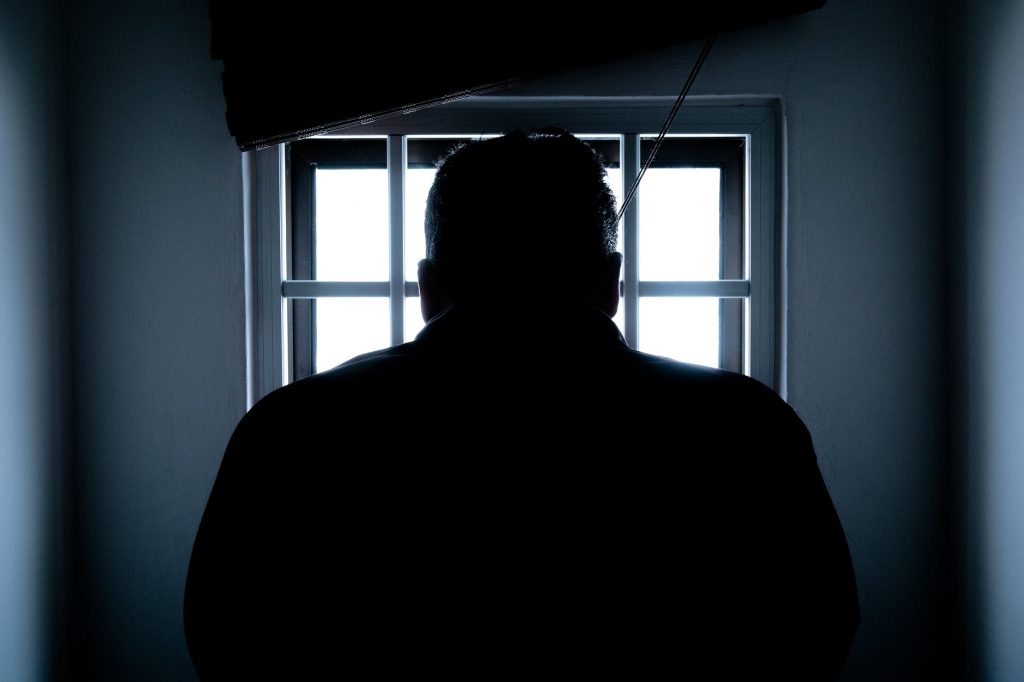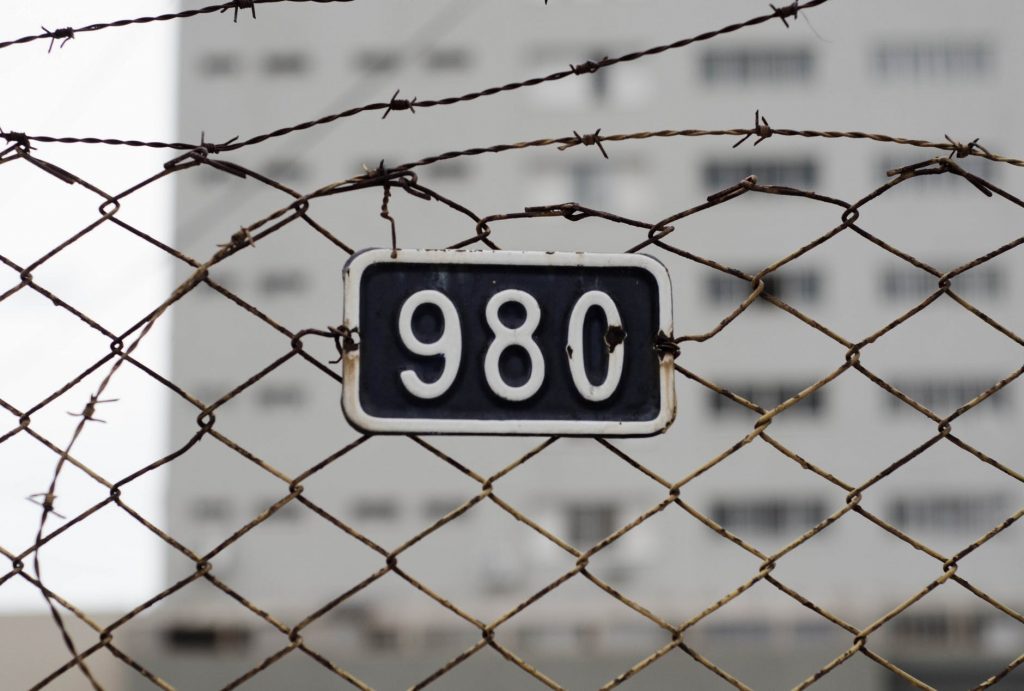What is the Three Strikes Law?

A lot of laws have mandatory minimum and maximum penalties for their respective crimes, put into place to ensure that justice is served, but not in a cruel or unconstitutional manner. But aggravating factors – aspects of the crime that make it particularly more offensive – are often factors in increasing that sentence, sometimes all the way to the max. Some of these factors include:
- Lack of remorse
- Serious harm to the victim
- Committing a crime in the presence of a minor
- Crimes where the victim is a minor
- Use of a weapon
- The victim’s vulnerability
- Likelihood of the defendant offending again
One of the most weighing factors on the sentencing is that last one. That’s where the Three Strikes law comes into play. This is a policy on a federal level and in some states that requires repeat offenders to receive a minimum sentence of life in prison – particularly in the case of violent crimes. Repeat offenders present an especial risk to the public, especially if their crimes are ones that harm others and put the lives of the public in danger. These laws work to ensure that those who will continue to be a risk to others will have to face life in prison in order to provide safety to the society. However, the law has faced sharp criticism since its creation, as its opposers site the way it contributes to the disparity between incarcerated racial minorities and whites.
Habitual Offenders
A habitual offender is someone who is convicted of more than one crime, no matter how serious or minor the crime. Some of the most common crimes that are committed habitually are DUIs, illegal drug possession, petty theft, trespassing, and conducting business without a proper license. There are many laws in effect on federal and state levels in order to ensure that these habitual offenders receive more severe penalties each time they commit a new crime, hoping to deter them from these crimes occurring again and again – the most famous of these being the Three Strikes law, which gives severe minimum penalties for violent crime and felony repeat offenders. However, in general, having a prior conviction history is likely to be a factor in any defendant’s case. It can lead to:
- Longer prison sentences
- Heavier fines
- Lesser or later chance for parole
- Rehabilitation
- Supervised probation
- License restrictions
- Inability to own firearms
- Loss of certain civil rights
When looking at how much a previous conviction should play in the sentencing of the current crime, judges consider the following:
- Is the offense the same as the last offense?
- How long has it been since the last offense?
- Were they already on probation for another crime when it occurred?
- Were the crimes violent or involve serious drug charges?
- Does the offender have a substance abuse problem?
- Does the offender have a mental health issue?
- Is the offender perpetrating crimes towards the same victim?
Overall, when being charged with a current crime, a past criminal record is likely to come into play when it comes to sentencing. Defense becomes much harder, especially in violent crimes, as there is a matter of maintaining public safety by keeping what they may consider to be a habitual violent offender out of society. A criminal record does not bode well for the future decisions that an offender may make, especially if they commit crimes shortly after serving a sentence for a prior crime.

Federal Three Strikes Law
This law stems from the the Violent Crime Control and Law Enforcement Act of 1994, which is the largest crime bill in the history of the US – explains why it took six years and 356 pages, put into place by President Bill Clinton. It provided 100,000 new police officers, $9.7 billion in funding for prisons, $6.1 billion for programs to prevent crime with input from police officers, and expanded the amount of crimes that are eligible for the death penalty. It also put into place a mandatory life sentence after “three strikes” for repeat offenders, called the “Three Strikes, You’re Out” provision.
18 U.S.C. § 3559(c) states that those who are receiving sentencing for a “serious violent felony” and already have two or more prior convictions – with one or more being a “serious violent felony” and one or more being a “serious drug offense” must receive a life sentence in prison. These “serious violent felonies” include:
- Murder
- Manslaughter
- Assault with intent to rape or murder
- Sex offenses
- Kidnapping
- Robbery
- Carjacking
- Extortion
- Firearm use or possession
- Arson
- An intent to commit any of these crimes
- Any offense with an element of force or a significant risk of force punishable by ten years or more
It also expands on qualifying factors for some of these crimes, depending on circumstances:
- Robbery: This is only applicable when there was no use or threat of use of a firearm or dangerous weapon and no one was harmed.
- Arson: Arson does not qualify if there was no threat to human life and the offender knew that.
Drug offenses that qualify to be considered in this provision include these crimes involving controlled substances:
- Distribution
- Manufacturing
- Possession with intent to distribute significant quantities
State Three Strikes Law
A large number of states also include this rule, or some version of it, in their own state laws. The following 29 states have enacted the three strikes law, 23 of which happened within a year of the passing of the federal law:
- Arizona
- Arkansas
- California
- Colorado
- Connecticut
- Delaware
- Florida
- Georgia
- Indiana
- Kansas
- Louisiana
- Maryland
- Massachusetts
- Montana
- Nevada
- New Jersey
- New Mexico
- New York
- North Carolina
- North Dakota
- Pennsylvania
- South Carolina
- Texas
- Tennessee
- Utah
- Vermont
- Virginia
- Washington
- Wisconsin

The variation of this policy is pretty wide state-by-state, as some have added a bit more leniency into their policies, usually amending them after the initial law. Some aspects that may differ are: what counts as a “strike;” how many strikes until you’re “out;”and if there’s a possibility of parole and when. Following is a selection of several state Three Strikes laws:
- California: This state tends to be regarded as the state with the strictest repeat offender laws. Their law actually began with any third crime being viable for a mandatory life sentence, which was later changed with Proposition 36 in 2012 when many offenders were being incarcerated for minor crimes that didn’t deserve such harsh sentences.
- Texas: Texas’ law had been around over 40 years before the federal court implemented their policy and allows for slightly lesser sentences for those who commit crimes that aren’t quite as serious as a life sentence. It also considers the severity of the past crimes on the offender’s record. However, it still will most likely come with at least 15 years in prison, while the more serious offenses will be 25 years to life.
- Connecticut: Here, they refer to their policy as punishing a persistent felony offender. For an offender with a prior serious conviction, their penalties will be twice of what they would receive on a first offense – whether the minimum, maximum, or anything in between – or at least 40 years, whichever is longer. They sometimes call this “two strikes.” Their “three strikes” policy involves three times the punishment or 60 years, whichever is longer. They list their current conviction types that would result in one of these penalties:
- Manslaughter 1st or 2nd degree with a firearm
- Kidnapping 1st degree, 1st degree with a firearm, 2nd degree, or 2nd degree with a firearm
- Robbery 1st degree
- Assault 1st degree
- Assault of elderly, blind, disabled, or pregnant person or person with intellectual disability 1st degree
- Home invasion
- Burglary 1st degree
- Burglary 2nd degree with a firearm
- Sexual assault 1st degree
- Aggravated sexual assault 1st degree
- Sexual assault 3rd degree when victim is under 16
- New York: The state with the longest standing habitual offender law – since 1797, New York actually deemed this unconstitutional in 2010. However, the policy was reaffirmed.
- Missouri: Missouri does its habitual offender penalties based on what percentage of their sentence the offender must serve before being eligible for parole. For the second offense, they must serve 40 percent of their sentence or until the offender turns 75 and has served 30 percent of their sentence. The third offense is 50 percent, or turning 70 with 40 percent served. A fourth conviction requires 80 percent or 70 years old and 40 percent
- Alabama: Alabama’s laws are a bit lengthier. If the defendant already has a Class A, B, or C felony, their current conviction goes up a class. When it’s a Class A, it will come with 15-99 years. If they have two of these conviction previously, then the conviction goes up two classes. A Class B felony gets 15 – 99 years, and a Class A felony gets 99 years to life. On a fourth offense, a Class C felony has 15-99 years, and a Class B has 20 years to life. A Class A felony – if they do not have a previous Class A conviction – will have a sentence of life or life without the possibility of parole. If they do have a previous Class A, then they will receive life without the possibility of parole.
- Maryland: In Maryland, the fourth offense is when their policy comes into effect, and it requires life without the possibility of parole.
- Utah: This state’s three strikes policy raises the felony a degree, along with the more severe sentencing that comes with it. If it’s already a first degree felony, then it removes the possibility of parole and allows the Board of Pardons and Parole to use the past offenses when considering the sentence. A sexual offense will come with five additional years to the maximum for each previous sexual offense.
- Washington: Washington’s third strike rule sentences these offenders to a term of life in prison without possibility of parole. They also are not eligible for:
- Community custody
- Earned release time
- Furlough
- Home detention
- Partial confinement
- Work crew
- Work release
- Any other form of release
- Any other form of authorized leave from a correctional facility without being in custody of corrections officers – unless they are in need of emergency medical treatment or are being sent to an inpatient treatment facility if they are convicted of rape in the first degree
- Montana: This state has a two strikes policy, where their previous felony could have resulted in over a year in prison and less than five years has passed since their conviction or being released from parole. These offenders will be sentenced to 5 to 100 years in prison or a $50,000 fine, or both – if the offender is 21 years or older. It also outlines a mandatory life sentence without possibility of parole if the offender committed one of these offenses in the past and commits another of them:
- Deliberate homicide
- Aggravated kidnapping
- Sexual intercourse without consent
- Sexual abuse of children
- Ritual abuse of a minor
- Or the defendant was has a conviction of two of the following, or one of these and one from above:
- Mitigated deliberate homicide
- Aggravated assault
- Kidnapping
- Robbery
- Aggravated promotion of prostitution

Criticism of the Three Strikes Law
President Clinton himself has since said, “I signed a bill that made the problem worse, and I want to admit it,” recognizing that it resulted in imprisoning “minor actors for way too long.” There are two main criticisms of the variations of this policy throughout the US: it can lock up offenders for life for minor crimes, and it results in a greater racial disparity between incarcerated white Americans and racial minorities. There are also some who believe that it resulted in a massive increase in incarceration rates – however, many believe that this number was rising regardless, and the impact was relatively light. It’s also believed that it didn’t do much for preventing crime either.
Just two years after the law was implemented in California, the nonprofit Center on Juvenile and Criminal Justice reported that 43% of the defendants imprisoned for their third strike in 1995 were black, and that “there was no scientific basis to conclude that the disparity between blacks and other groups in the application of ‘three strikes’ stems from a significantly higher rate of violent crimes committed by African Americans.” The Department of Corrections found through an analysis that 85% of the second or third convictions of all inmates incarcerated under the new law were nonviolent crimes.
Studies and criticisms seem to have tapered off lately, so it’s uncertain the impact that it has on the black population today, as well as whether the measures states have taken in order to minimize these consequences have been sufficient to combat these issues.
In 2018, President Donald Trump signed the First Step Act, providing criminal justice reform through addressing the inequalities in sentencing laws. It eliminated the life sentence for the Three Strikes law, and allows judges to have more discretion to form sentences on a more case-by-case basis. Also, it works to provide more rehabilitation programs to help offenders avoid becoming habitual offenders in the first place. According to the Federal Bureau of Prisons and the US Sentencing Commission, it has released over 3,000 inmates and reduced the sentences of 1,700 offenders serving time for crack cocaine offenses – which is a particular win for black men, as this is a sentencing bias that originated from the War on Drugs in the ’70s. However, the left side of America continues to call to break down more of the barriers and injustices for racial minorities in the criminal justice system, wanting to fully delve into police and citizen interactions, biased sentencing policies, economic disadvantages, and more that cause minorities to have more than the short end of the stick in this system.

Habitual offenders are a part of the criminal justice system that the federal and state legislature attempt to deter from committing more crimes, but it’s uncertain where the Three Strikes law stands on improving that issue. The law, requiring certain repeat violent offenses to be punished with a minimum of life in prison, differs from state to state, especially as states have amended some of their laws in order to allow the judges to consider cases a little bit more specifically to the circumstances surrounding them. However, when there are prior convictions, no matter how serious, it can definitely be taken into account when receiving a punishment, as well as additional punishments like probation, rehabilitation, and even losing the chance for parole. There has been debate, especially surrounding the federal and California law, in which the argument is made that the law contributes to the incarceration disparity we see among black and white offenders. As the Trump administration has removed the life sentence with this law, the country still calls for additional efforts to be made to ensure justice is being pursued justly, and not at the risk of sacrificing the rights and freedom of those who don’t deserve it.



